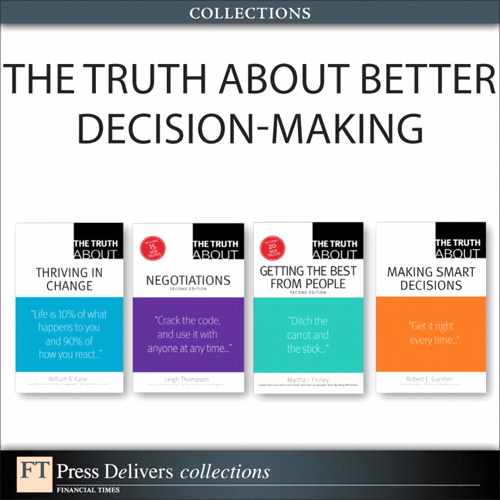Truth 37. Focusing on what’s right can help solve what’s wrong
When you face a mandate for change within your department or company, you can choose two different approaches: You can obsess on the problem until you’re limply depleted of ideas, or you can go the other way and obsess about what’s going well and allow the power of positive focus to drive a constructive plan for the transformation you need.
Metaphysical theorists will tell you that whatever you focus on is the thing that expands. For a more managerial perspective, the late Peter Drucker, widely considered to be the founding father of the study of management, put it this way: “Leading change is about aligning people’s strengths so that their weaknesses become irrelevant.” Either way, the message is this: If you want to build positive change, sharpening your beam of attention strictly on what’s wrong and needs to be changed is not going to motivate your team toward the better future. The ideal future is built on what’s already great, highly functioning, healthy, and whole.
The ideal future is built on what’s already great, highly functioning, healthy, and whole.
If you want your team to work toward positive change in your organization, the practice known as appreciative inquiry can be just the approach you need for gathering your people into a workplace community of forward-thinking, mutually supportive change agents. In this approach, the task is broken down into five phases, all of which tap into your employees’ creative attentions, strengths, resources, and assets toward creating positive change—which is a lot more motivating that trying to fix only what’s wrong:
Phase 1. Frame the task in a positive, affirming way. Instead of asking, for instance, “How can we reduce this high turnover?” ask “What is it about this organization that inspires people to stay?”
Phase 2. Focus on what is great about the organization as it is right now. Lead your team into discussing in as rich detail as possible all those elements that make up your organization’s positive core. Create an opportunity for your team to exchange stories about times they felt that the company was at its best, when they were at their best, and what can be learned and borrowed from those examples to catalyze the change that’s necessary now.
Phase 3. Dream about what could be. Allow your team to brainstorm in as vividly as possible all the different ways the organization can improve to serve your customers even better. If there was ever a time to indulge in “blue sky” thinking, this is it. There should be no limits to the grandiosity of the vision and ideas. The ideas should be as emotionally compelling as possible, without regard (at this point) to practical applications.
Focus on what is great about the organization as it is right now.
Phase 4. This is the practical application phase. The dreams take a significant step closer to becoming real in the design phase. This is where the emotionally compelling ideals are translated into processes, outcomes, decisions, and systems that will help the Phase 3 ideals actually take shape.
Phase 5. The destiny phase calls upon the participants to actually commit themselves to all the actions necessary to transform the dreams they devised into the realities essential for moving their organization forward.
The power of the appreciative inquiry approach to motivating change is drawn from the fact that all players are invited to participate within a positive culture of possibility. This is far more inspiring and motivating than the more traditional shame-based focus of determining what the root cause is of a problem (barriers, failures, resistance). With appreciative inquiry, possibility-based brainstorming is launched from the belief that the organization is already at its best.
All players are invited to participate within a positive culture of possibility.
It’s human nature to be more inspired by improving on what’s already great than in wallowing in the muddy trenches of what’s going wrong. Make a point of reminding your team members of their excellence. And keep them in the habit of appreciating the strengths they bring as a group to the organization, as well as the successes that they have already racked up in their collective histories.
